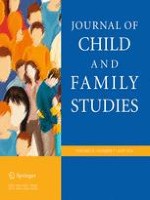25-02-2016 | Original Paper
Parenting as Mediator Between Post-divorce Family Structure and Children’s Well-being
Gepubliceerd in: Journal of Child and Family Studies | Uitgave 7/2016
Log in om toegang te krijgenAbstract
Divorce and its subsequent transitions can be stressful for children and therefore, affect their well-being in a negative manner. Effective parenting (with high support and high control) can, however, function as a protective factor. While previous studies have indicated that effective parenting does indeed improve children’s well-being after divorce, these studies tended to concentrate on maternal family structures and transitions as well as maternal parenting. With this study, we investigate the mediating role of both maternal and paternal parenting between various family structures after divorce (including the custodial arrangement as well as the repartnering of both parents) and children’s well-being. Therefore, we analyzed 618 parent–child dyads from the multi-actor dataset “Divorce in Flanders—DiF” using a mediated structural equation model. Results revealed that both maternal and paternal parenting can mediate between family structure after divorce and children’s well-being. Depending on the type of post divorce family constellation, parenting can be considered as a risk or a protective factor, for both maternal and paternal parenting.
